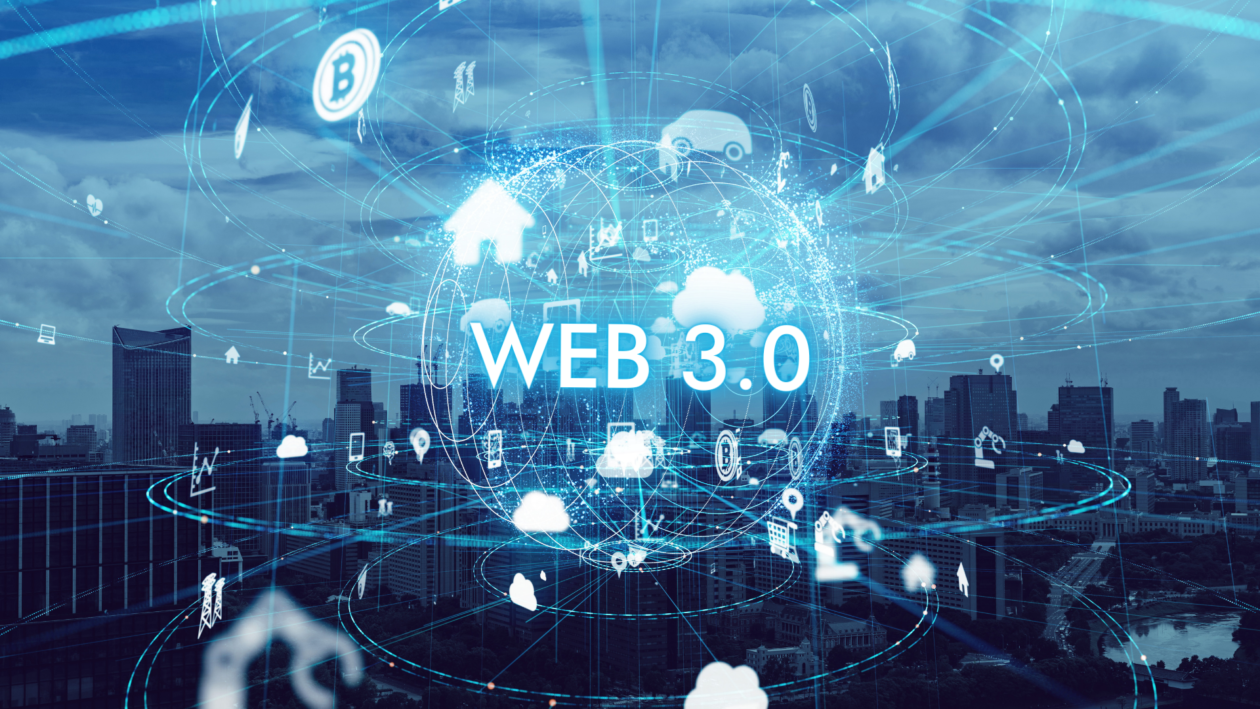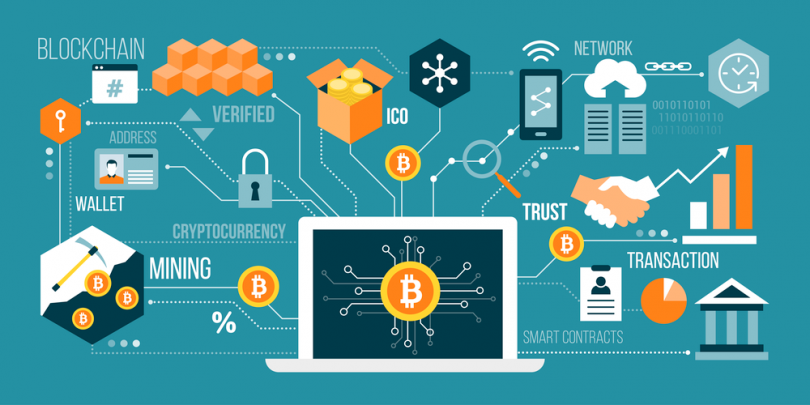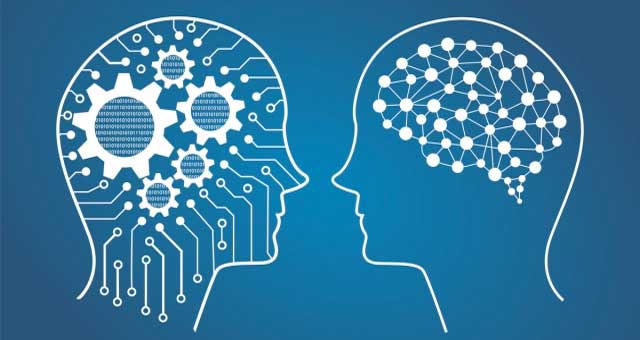This article was published as a part of the Data Science Blogathon.
Introduction
The internet has come a long way since Web 1.0. Hypertext Markup Language (HTML) defines the layout and delivery of websites in Web 1.0 and Web 2.0 technologies. With Web 3.0, HTML will remain a core layer, but how it connects to data sources and where those data sources are stored may change from previous generations of the web.
In the Web 2.0 age, practically all websites and applications rely on some type of centralised database to supply data and allow functionality. Instead of using a centralised database, Web 3.0 apps and services employ a decentralised blockchain. The primary notion behind blockchain is that it is a sort of distributed consensus rather than an arbitrary Central Authority.
Key Technologies of Web 3.0
Web 3.0 might be built on AI, the semantic web, and omnipresent characteristics. The purpose of using AI is to provide end-users with quicker, more relevant data. A website that employs AI should be able to sort through and provide the information that it believes a certain user would find useful. Because the results include websites that have been voted on by people, social bookmarking as a search engine can produce better results than Google. Humans, on the other hand, can control these outcomes. AI might be used to distinguish between real and fraudulent results, resulting in outcomes that are comparable to social bookmarking and social media but without negative feedback.

Image: https://forkast.news/what-is-web3-how-shape-crypto-future/
The semantic web’s goal is to categorise and store data in such a manner that a system can learn what specific data means. To put it another way, a website should be able to understand the words used in search queries in the same manner that a human would, allowing it to create and distribute better content. AI will be used in this system as well; the semantic web will educate a computer on what the data means, and AI will then utilise that information.
Several significant Web 3.0 technologies, including the following, assist to define what the third generation of the web will likely be all about:
1. Blockchain Technology
A blockchain is a decentralised ledger that records all peer-to-peer transactions. Participants can confirm transactions without the requirement for a central clearing authority using this technology. Potential applications can include financial transfers, settling transactions, voting, and many other difficulties.
It’s important to conceive of blockchain technology as a form of next-generation business process optimization software from a business standpoint. Collaborative technology, such as blockchain, promises to enhance business procedures between organisations, cutting the “cost of trust” dramatically. As a result, it may provide much better returns per dollar invested than most typical internal investments.

Image: https://coinpedia.org/news/blockchains-cross-chain-communication-is-needed/
Financial organisations are looking into how blockchain technology may be used to revolutionise everything from clearing and settlement to insurance. These articles will assist you in comprehending these developments and determining what you should do in response.
Any effort to tamper with the record breaks the chain, and no central authority can manage it since validated copies of the database are scattered over the internet. Blockchain technology may be used to retain a record of transactions in any application, although most people relate it with cryptocurrencies, which we’ll discuss next.
2. Cryptocurrency
Cryptocurrency, sometimes known as crypto-currency or crypto, is any type of digital or virtual currency that employs encryption to safeguard transactions. Cryptocurrencies operate without a central issuing or regulating body, instead of relying on a decentralised system to track transactions and create new units. Blockchain technology is used in cryptocurrency to keep track of how much money is in circulation and who owns how much of it.
It’s a peer-to-peer system that allows anyone to send and receive payments from anywhere. Cryptocurrency payments exist solely as digital entries to an online database describing specific transactions, rather than as physical money carried around and exchanged in the real world. The transactions that you make with cryptocurrency funds are recorded in a public ledger. Cryptocurrency is held in digital wallets.

Image: https://www.finance-monthly.com/2022/02/bitcoin-motion-the-website-you-need-to-succeed-in-cryptocurrency/
The moniker “cryptocurrency” comes from the fact that it employs encryption to authenticate transactions. This implies that storing and sending bitcoin data between wallets and to public ledgers requires complex code. Encryption’s goal is to ensure security and safety.
Bitcoin, the first cryptocurrency, was created in 2009 and is still the most well-known today. Much of the fascination with cryptocurrencies stems from the desire to trade for profit, with speculators driving prices high at times.
3. Semantic Web
The Semantic Web is the next step in the Web’s growth. The semantic web enhances online technologies that are in demand for creating, sharing, and connecting material through search and analysis based on the capacity to grasp the meaning of words rather than keywords or numbers.
The ultimate goal of the Semantic Web, according to its creator Tim Berners-Lee, is to allow computers to better modify data on our behalf. He goes on to say that the word “semantic” in the context of the Semantic Web means “machine-processable” or “what a computer can do with the data.” The term “web” connotes a navigable space of interconnected objects with URI-to-resource mappings.
4. Artificial Intelligence and Machine Learning
Machine learning technologies and other major fields of artificial intelligence have exploded in popularity in recent years. These technologies are crammed inside our cellphones, which is how applications like Apple’s Siri function. You can talk to an intelligent agent and have them parse what you’re asking for thanks to Natural Language Processing (NLP).

Image: https://sourceedge.com/digital/apps/ai-ml
Machine learning is also used to forecast human wants and behaviour by processing vast volumes of data in real-time. We now have intelligent network-connected gadgets everywhere thanks to the Internet of Things (IoT). This opens up a lot of possibilities for gathering data and turning it into something useful.
By combining this power with natural language processing, computers in Web 3.0 will be able to discern information in the same way that people do, resulting in faster and more relevant results. To meet the needs of users, they grow increasingly intelligent.
5. The Metaverse
The term “metaverse” does not relate to a single form of technology, but rather to a general movement in how people engage and communicate with technology in today’s rapidly changing environment.

Image: https://www.dreamstime.com/illustration/metaverse-city.html
The Metaverse is another ill-defined notion that appears to overlap and interconnect with Web3 concepts if either ever materialises. The Metaverse is a concept about how humans will interact with the internet in the future. To produce a consistent and integrated user experience, it largely relies on virtual reality (VR) and augmented reality (AR). The digital goods you own mix with the natural environment in the Metaverse, and you engage with the web in a far more embodied way.
6. 3D Graphics
3D computer graphics (as opposed to 2D computer graphics) are graphics that make use of a three-dimensional representation of geometric data stored in the computer to conduct computations and display 2D visuals.
In Web 3.0, three-dimensional design is widely employed in websites and services. This may be seen in museum guides, computer games, eCommerce, geographical settings, and other places.
7. Decentralised Autonomous Organisations
Decentralised Autonomous Organisations (DAOs) are a powerful and secure method to collaborate with like-minded people all across the world. Consider them an internet-native business that their members jointly own and govern. They have built-in treasuries to which no one can have access without the group’s permission. Proposals and voting are used to make decisions, ensuring that everyone in the company gets a say.
There is no CEO who can spend money on their own whims, and no risk of a shady CFO tampering with the accounts. Everything is out in the open, and the DAO’s spending restrictions are encoded into its code.
In a permissionless (aka trustless) blockchain, the organisation’s policies are encoded utilising novel contract technology. Traditional organisations don’t require the extensive and expensive administrative divisions that they’ve established to keep things running. Because every transaction and its history is subject to public examination, DAOs make it nearly difficult to conduct fraud.
A DAO’s smart contract is its backbone. The contract establishes the organization’s policies and safeguards the group’s funds. No one may modify the rules after the contract is live on Ethereum except by a vote. It will fail if someone attempts to do something that isn’t covered by the code’s rules and logic. Because the treasury is also specified by the smart contract, no one may spend the money without the permission of the organisation. This eliminates the requirement for a central authority in DAOs. Instead, the group makes choices collectively, and payments are granted automatically when votes are passed.
8. Distributed Computing (Edge Computing)
Edge computing is a networking paradigm that focuses on placing processing as near as feasible to the source of data to decrease latency and bandwidth use. Edge computing, in simple words, involves executing fewer processes on the cloud and relocating them to local locations, such as a user’s PC, an IoT device, or an edge server. By bringing processing to the network’s edge, the quantity of long-distance transmission between a client and server is reduced.
Data may, for example, be processed locally before being transported to a central site to be aggregated. This implies you can pool the processing power of devices at the network’s edges to create a massive decentralised supercomputer. Having the adequate computational capacity to analyse the data collected by billions of IoT (Internet of Things) sensors in smart homes, industries, and retail stores is a significant issue. Edge computing provides a solution to satisfy such demands while also saving bandwidth and delivering data rapidly.
9. Smart Contracts
A smart contract is a self-executing contract in which the conditions of the buyer-seller agreement are put directly into lines of code. The code, as well as the agreements it contains, are disseminated throughout a decentralised blockchain network. Transactions are trackable and irreversible, and the programming regulates their execution.
Smart contracts eliminate the need for a central authority, legal system, or external enforcement mechanism to carry out trustworthy transactions and agreements between distant, anonymous participants. Smart contracts allow for the provision of financial services or the creation of legal agreements between parties at a considerably lower cost than traditional contracts. They’re also a lot fairer and can’t be manipulated once they’re turned on.
Smart contracts are computerised transaction protocols that implement contract conditions, according to Nick Szabo, an American computer scientist who devised a virtual currency called “Bit Gold” in 1998. Transactions are traceable, transparent, and irrevocable with smart contracts deployed on blockchains.
10. Decentralised Apps
You’re utilising a centralised programme when you utilise a cloud-based service like Google Docs. Google has full access to all of the data in your documents, including the ability to read and manage it. In exchange, we may store our data in the cloud, work with others quickly, and take advantage of a slew of other cloud-app benefits.
But what if you could benefit from these cloud services without having to adhere to a centralised authority? This is where decentralised apps, sometimes known as “dApps,” come into play. Most apps run their online computations on the Ethereum blockchain, and these computations are compensated for with Ethereum “gas” fees.
Decentralised apps (dApps) are digital programmes or applications that operate on a blockchain or peer-to-peer (P2P) network of computers rather than on a single computer. DApps (also known as “dapps”) exist outside of the control and jurisdiction of a single authority. DApps, which are frequently constructed on the Ethereum platform, may be used for a wide range of applications, including gaming, banking, and social media.
DApps can run on either a peer-to-peer (P2P) or a blockchain network. BitTorrent, Tor, and Popcorn Time, for example, are software that operates on computers that are part of a peer-to-peer (P2P) network, where numerous users are consuming, feeding, or seeding material, or doing both roles at the same time.
Conclusion
Web 3.0 is no longer a dream but a reality (at least in many cases) (at least in many cases). In reality, it is cognitive technology like that of expert.ai that is making this all feasible. Language is crucial to so many aspects of the Internet. The possibilities are unlimited if semantics and natural language processing are fundamental components.
- Web 3.0 will make the internet more equitable by allowing individuals to be sovereign. True sovereignty entails controlling one’s time and knowledge and being able to control who profits from it.
- Individuals will be able to connect to an internet where they can own and be properly compensated for their time and data, eclipsing an exploitative and unjust web where giant, centralised repositories are the only ones who own and profit from it, thanks to Web 3.0’s decentralised blockchain protocol.
- As a consequence, from tailored search results to cross-platform development tools and the usage of 3D graphics, web 3.0 will speed up the honest and transparent use of user data. The internet will become more immersive and interactive in the near future.
The media shown in this article is not owned by Analytics Vidhya and is used at the Author’s discretion.






So we are running into the matrix and everybody will be happy.
Hello sir, I am here, just new in programming lang,i am much interesting to modern Science and technology. I m learning JS. Would you like to give me some instructions, how can i prepared myself for web 3.0.?
This was a fascinating read! I'm particularly excited about the potential of decentralized finance and how it could change the way we think about banking. The future of Web 3.0 seems incredibly promising! Thank you for sharing these insights!